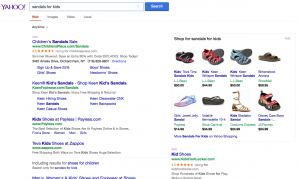
With the exponential rise of mobile users, Google has responded by creating a mobile first index that prioritizes search results for these users, specifically.
Instead of showing mobile users results based on signals from desktop sites, Google is reconfiguring results based exclusively on signals from mobile sites.
This changes things for marketers. Mobile users aren’t just a growing niche – they are set to become the new normal. Marketers basically have to shift the paradigm so that they think of mobile users first and desktop second.
Here are a few things you can do to ensure you dominate SEO in the mobile first index:
Test Your Pages
First, you need to understand how Google sees your pages in mobile.
Visit Google’s Mobile-Friendly Test tool and enter the URL of each page that you want to test. Google will let you know if the page is optimized for mobile. If not, it will give you a list of key recommendations to optimize the page.
The tool won’t test the whole site, so if you have a lot of pages, you should start by testing only your most important pages. That should include your home page, landing pages and any product pages.
You can use tools like Deep Crawl to get a more comprehensive look at your whole site if you want insights faster.
Ensure Indexing
Make sure all your mobile pages are being indexed by Google so that you have a fighting chance to rank.
If your pages aren’t even indexed, there will be nothing to rank.
The easiest way to find out if you’re ranking is to go to Google and enter site: yourdomain.com. The search results should match the number of pages on your site, or come close.
If there is a significant discrepancy in the results, you will need to look more closely to find out what pages are missing and why.
Look for Smartphone Errors
The Google Search Console provides a wealth of information. To ensure you’re ranking in mobile, you should look at it to find your smartphone errors.
To do this, you should click on “crawl errors” in the console. Under that tab, click on “smartphone errors.”
You will get information about DNS errors, server connectivity and robots.txt fetch. You’ll also see how many URL errors you had, including a graph of these errors over time.
The console will tell you what type of errors you have so that you can correct them. That way you can be sure that smartphone users are always seeing your pages as you intended.
Make Sure Content Matches
You should have a dedicated mobile site by now.
Many brands maintain a separate mobile site, but they don’t include all the information on it that they do for desktop. Sometimes, that makes sense. Information doesn’t show up on mobile screens the way it does on desktop screens.
However, some information is left off because of apathy or oversight.
Leaving information off your mobile site can cause you to lose search rank and traffic. It is important that you update your mobile site to reflect all the content that is included on your desktop site.
If the information doesn’t make sense for the mobile site as it currently is, make adjustments. That might mean reformatting the content with more bulleted lists and headers, or it might mean paring down the images or other graphics.
Get AMP
Google now has Accelerated Mobile Pages that help you get more exposure in search while also improving the experience for mobile users.
AMP not only reduces the burden on your site, but it also helps you to rank better in search.
AMP loads faster, it gets more exposure, and it can be indexed in place of mobile pages. If you don’t have a mobile website set up, signing up for AMP is a quick fix that can buy you time while you get the site up and running.
Just don’t run AMP if you already have a dedicated mobile site. Having both will force Google to index your desktop site instead, which will cause you problems in the mobile first index.
Ultimately, you want a dedicated mobile site with a URL that looks like m.yoursite.com. Then you want to optimize every page with content that appeals to mobile users and is formatted to give them a great user experience.
Before you take any of these other steps, you need to get your site started and audit all your content. You may find that you need to clean up the content on your desktop site, as well, when you perform this audit.
It may be a lot of work now, but in the end, you’ll rank much higher in what will be an important index for the future. Mobile users are only going to grow, so it’s time to move forward.
Digital & Social Articles on Business 2 Community(109)
Report Post





